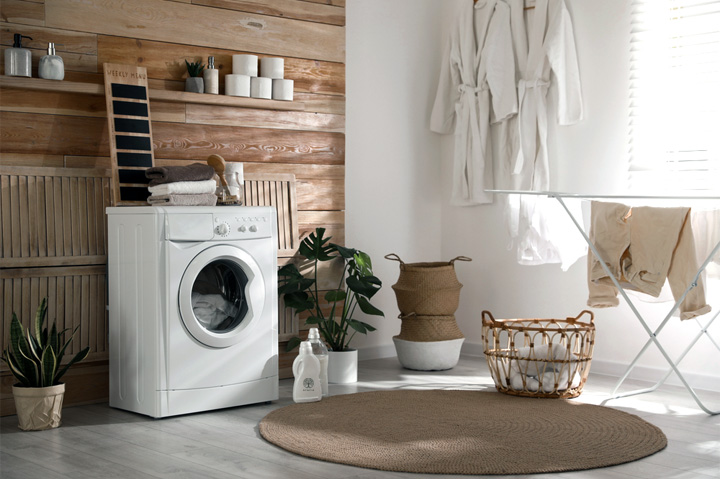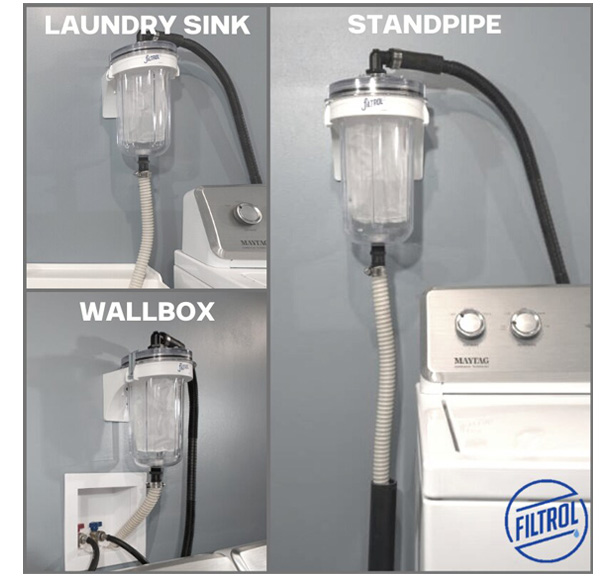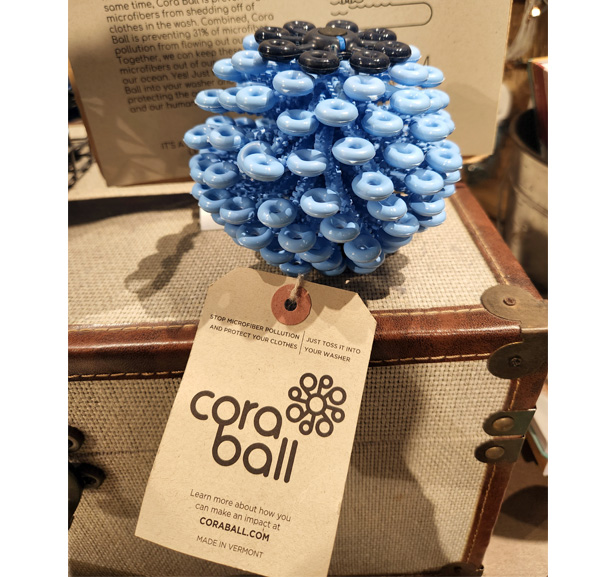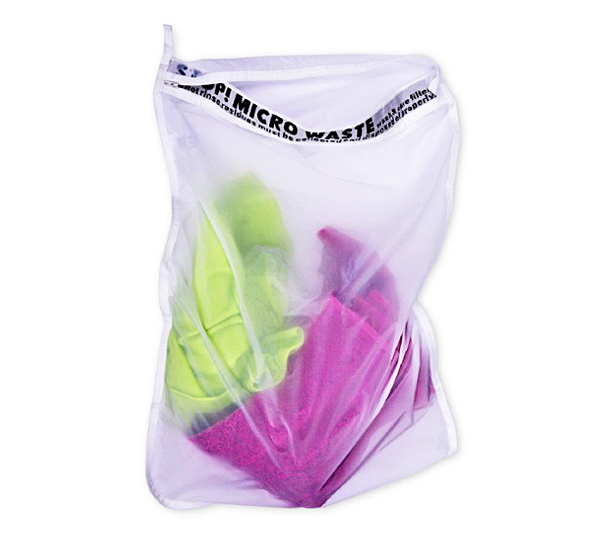Sustainability August 25, 2022
5 Proven Ways to Reduce Microfiber Shedding
Microplastics, often from synthetic textiles, are polluting the oceans and harming marine life. These products and strategies can help solve the problem.
Yoga pants, fleece, performance tees and other athleisure wear have long been a staple of the promotional products industry and the fashion world at large.
The problem? Much of it is made of synthetic fibers like polyester or nylon. And though more suppliers are sourcing fabrics made with recycled polyester rather than virgin, that doesn’t solve another major issue: When synthetic fabrics are laundered, friction and abrasion cause microfibers to shed from the apparel and end up in waterways. By some estimations, microshedding from laundry amounts to the equivalent of 3 billion polyester shirts released into the ocean each year.

Microplastics – broken-down plastic fragments that measure less than 5 millimeters – also enter water and airways through larger pieces of plastic like bottles, car tires and microbeads in skin-care products. But microfibers shed from apparel account for a significant percentage of plastic pollution in the world’s oceans – as much as 35%, scientists say. This makes textiles the largest known source of marine microplastic pollution.
As more microplastics enter and harm marine life, greater concentrations are contaminating our own food. A report from the World Wide Fund For Nature estimates that humans ingest the equivalent of one credit card’s worth of plastic per week through the water they drink and the air they breathe.
There’s almost nowhere on earth that these tiny, non-biodegradable plastics haven’t been found. The point is, they aren’t going away – but there are ways to minimize microfiber shedding during laundering to reduce microplastic pollution. Here are five strategies for doing just that.
1. Install an External Laundry Filter

Laundry filters, like the Filtrol, are a surefire way to capture microfibers in the wash.
Installing a washing machine microplastic filter may be little pricey and require some plumbing expertise, but their effectiveness has been proven. Patagonia, known for fleece pullovers that have traditionally been made with synthetic fibers, has been making efforts to reduce microfiber pollution and educate consumers on how to help. The popular outdoor brand recommends its customers use a product like the Filtrol, a washing machine filter that attaches to the drain hose and removes microfibers before they enter waterways.
Another option is the Lint LUV-R filter, originally created to protect septic tanks in Canada. A 2020 study by scientists with the International Marine Litter Research Unit at the University of Plymouth found that the LUV-R reduced microfibers in wastewater by 29%, and another study that year found that it reduced shedding by 74%. Varying results like this are common in this scope of research because there’s not yet a standardized way of comparing microfiber filters. What works best is ultimately the device that has the most third-party tests it and fits easily into your washday routine.
2. Use Laundry Balls

The Cora Ball can be thrown into a washing machine to collect microfibers so they don’t end up in waterways.
It doesn’t get any easier than using laundry balls made to capture microplastics. By far the most effective and widely tested one has a name inspired by the way coral filters the ocean: Cora Ball. This is the ideal choice if installing a filter is too difficult or for people who use a communal washing machine or laundromat. (It’s also a winning merch idea for aquarium and zoo gift shops.)
With each load, just toss it in the washer, then dispose of fibers in the trash. According to the University of Plymouth study, the Cora Ball captures 31% of microfibers.
3. Try a Laundry Bag

Laundry bags, like the Guppyfriend, are another product designed to reduce microfiber shedding.
Another simple solution is a microplastic-collecting laundry bag, like the Guppyfriend. To use the Guppyfriend, simply fill it halfway with synthetic clothing and toss it in the washing machine. Microfibers clumped along the bag’s seams and corners can then be thrown away.
A microfiber-catching laundry ball or bag can be a smart, sustainable upsell for promo distributors when they pitch fleece pullovers and other athleisure made of synthetic fibers.
4. Choose Clothing Made From Natural Materials
One way to circumvent the microfiber problem is to switch to natural fibers like hemp, cotton or linen whenever possible. Not only will this lessen microplastic shedding, but these natural fibers are renewable and have fewer environmental effects than their non-biodegradable synthetic counterparts.
5. Adopt Eco-Friendly Washing Techniques
It’s unclear exactly how microplastics directly impact our bodies, but what is known is that the problem is getting bigger and marine life is deteriorating because of it.
Since studies suggest that more water causes more microfiber shedding, reducing the volume of water you use in proportion to fabric can help. This means that you should wash full loads of laundry and avoid delicate settings, which use more water. The New York Times and Patagonia also suggest using front-loading washing machines, since these are found to cause less shedding than top-loading models. Patagonia also suggests laundering items less often and spot cleaning if possible to reduce water use.
Consider creating laundry instruction cards, explaining the microfiber shedding issue, and including them with any polyester or synthetic apparel you sell. Not only will it help to educate the end-user about the microplastic issue, it will also show clients that you’re trying to be part of the solution.

Promo for the Planet is your destination for the latest news, biggest trends and best ideas to help build a more sustainable and socially-responsible industry.
